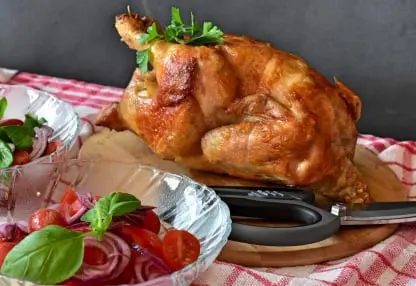Poultry quality inspection app:
Poultry quality inspection app for poultry farming, poultry harvest, poultry processing, packing, poultry freezing: full poultry quality control solution.

Poultry Supplier quality inspection & management
Products of meat and poultry have often been connected to the occurrence of foodborne illnesses. These illnesses can be reduced by implementing the HACCP concept (Hazard Analysis Critical Control Point). However, the FSIS has the overall oversight and authority for quality control checks in meat and poultry products that are intended for commercial distribution. Its main responsibility is to ensure that there is a wholesome production of meat and poultry products.
Therefore, all businesses that produce meat and poultry that is federally inspected should design and operate HACCP guidelines. The systems arising from these guidelines should be able to conduct scientific process controls that can be approved to effectively eliminate, reduce, or prevent food safety hazards.

Poultry Quality inspections during production
View App Specifications.
The Seven HACCP Quality Control Checks for Meat and Poultry
1. Conducting a Hazard Analysis
A hazard is any chemical, biological, or physical cause that is likely to cause injuries or illness when not well controlled. This quality control check is important because it helps in developing hazards that may cause illness or harm when not controlled effectively. In the HACCP plan, it is important to consider the raw materials and other ingredients, storage and distribution, and use by a consumer.
The potential hazards are evaluated depending on their severity and their likely outcome. Severity considerations including impact, magnitude, and duration of injury or illness can help in understanding the health hazards to the public.
2. Pinpoint Critical Control Points
A CCP is important in eliminating or preventing food safety hazards. Potential hazards that can cause injury or illnesses if control is absent should be addressed by determining the CCPs. The information that is developed in the hazard analysis will be used by the HACCP team to identify CCPs in the process.
Some examples of CCPs include chilling, thermal processing, testing for chemical residues, testing products for contaminants, and product formulation. CCPs should be developed and also documented carefully. Additionally, they should be used for product safety purposes.

Poultry Quality control & management
When developing HACCP quality control checks, the next step involves establishing critical limits for all control points. The critical limits are arguments that help determine whether a control measure of the CCP is out of control.
The NACMCF (National Advisory Committee on Microbiological Criteria for Foods) defines a critical limit as a maximum or minimum value where chemical, biological, or physical parameters can be controlled to reduce, prevent, or eliminate the occurrence of food safety hazards.
4.Establish Critical Control Point Monitoring Procedures
After CL is set for each and every CCP in the HACCP development plan, there are certain procedures that should be established to monitor CCPs and to help in determining whether critical limits are being met. Monitoring should assess whether the CCP is still under control and to provide a record that can be used in future.
Purpose of monitoring
Track control of the entire process
To identify when deviation occurs, and when there is loss of control
To provide a document for verification purposes
5.Establishing Corrective Actions
Corrective action should be determined for each CCP in cases where the CL hasn’t been met. Corrective actions used often depend on the type of process and type of food produced. In case there is any deviation from the CL, corrective action is required to prevent any hazardous food materials from being distributed to consumers.

Daily Poultry factory hygiene checklist
6.Establishing Recordkeeping Procedures
When coming up with an HACCP plan, a firm should ensure that its system is effective in recordkeeping. This is because records are written evidence of the HACCP system. All the measurements and corrective actions that are taken should also be documented and filed.
These records can help to trace the history of the production of the finished product. In case there are any questions, the records can be used to determine whether the end product was safe for consumption.
7.Verification Procedures
HACCP systems of meat and poultry businesses should be systematically verified. There are four main verification principles used to verify HACCP systems as stated by the NACMCF. The verification process ensures that HACCP plans are implemented as planned. This process also confirms that the critical control points are accurate.
HACCP Cannot Survive Alone
In any food processing facility, the HACCP quality control checks cannot stand alone. Therefore, the HACCP plan should also use other food safety programs. Processing facilities that practice good manufacturing often support the HACCP plans and help in food quality and safety.
Sanitation Standard Operating Procedures are also necessary for meat and poultry operations that are federally operated. They address procedures for clean equipment, personnel, and facilities that are important for all products that are produced by a firm.